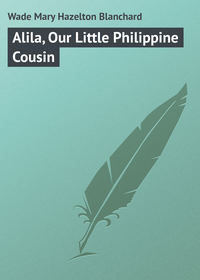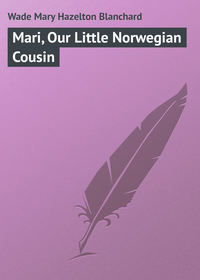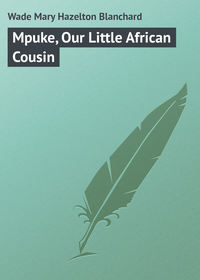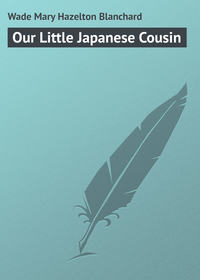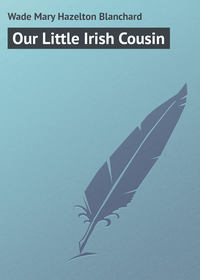 полная версия
полная версияLittle Folks of North America
All day long the people traveled, but when evening came the animals were unhitched from the “schooner” and allowed to feed on the grass; supper was cooked over the camp-fire, and beds were made upon the bottom of the wagon, where the family would sleep during the night.
Many days were often spent on the journey, but like everything else, it came to an end at last. Think if you can, of a sea of grass stretching around you as far as the eyes can see; not a building of any kind in sight; not even the smoke of a passing train to remind you that there are other people in the world; no sound in the air except the chirping of the crickets or the howling of the wolves; in summer, the blinding sun dazzling your eyes and turning the grass a withered brown; in winter, a carpet of snow stretching around you over the earth in every direction. This was the life in store for the boys and girls who went out on the prairies to seek a home in the early days of this country.
To be sure a herd of bison sometimes appeared near the children’s home, and then the men hurried out with their guns to kill as many as possible before the animals were put to flight. Before the coming of the white men these bison roamed together in thousands and the Indians of the plains made their tents and clothing from their skins and feasted on the flesh of the bison. Every year since that time they have grown scarcer till only a few are left in the country, and these are on exhibition in the parks of the west.
After the sun set in the evening sky the children of the prairie did not venture far from home, both on account of prowling wolves, and for fear of the Indians who might be skulking near by.
Lewis and Clark, and What They SawNot many years after the Revolution Thomas Jefferson, the third president, did many things for the good of the United States. Through his advice the people purchased a great deal of land in the southern part of the country from France, to whom it had been given by Spain. It was called the Louisiana Purchase.
Jefferson was not satisfied yet. He thought, “There is a vast country beyond us of which we know nothing. No one of our people has yet crossed it and reached the Pacific. This should certainly be done.”
He knew it would be a dangerous journey, for it was a wild country, roamed over by tribes of fierce Indians. Two men, however, offered to lead the expedition. Their names were Meriwether Lewis and William Clarke.
In the summer of 1803 they started out at the head of a party of men, carrying with them presents for the Indians they might meet, three canoes, two horses which should help them in hunting game, and a few blankets and cooking utensils.
During the winter they camped on the banks of the Mississippi, and with the coming of spring they began their journey up a broad river which emptied into it and which we know now as the Missouri. As the men followed the course of the river they moved farther and farther into the west. All summer long they slept under the stars, but as the cold winter set in and deep snows fell, they made rough cabins in which to live, and went no farther on their journey for several months. They killed bison and other game which furnished them with food, but they could not keep the biting cold out of their huts, and they suffered with the cold. Fierce Indian tribes were around them on all sides, friends were far away, but they had no thought of turning back. So, with the second spring, they pushed on.
When they reached the source of the Missouri there were high mountains before them, much higher than the Appalachian, and with their summits crowned with snow. After a long, hard journey they reached the other side, and launched their canoes on a small stream which grew ever broader till it entered a large river. This was the Columbia, along which they traveled till the Pacific Ocean lay spread before their eyes. They had journeyed more than four thousands miles since they left the banks of the Mississippi and were the first white men to cross the United States. They had visited the homes of Indians who had never seen a white person before or even known there were such beings. They had crossed broad plains where thousands of bison fed on the rich grass. They had discovered broad rivers shaded by lofty forests and crossed mountains containing mines of gold and silver, which before long would be opened up to give their rich stores to the people of the United States. They still had before them the long and dangerous journey home, which they reached two years and four months after they had left it.
There was great rejoicing among the people when the news spread of the safe return of the travelers and of the wonders they had to tell. From that time many boys and girls looked forward to moving into the great, far-western country with their parents.
On a Wheat FarmMany of the children of the prairies live on farms where wheat is raised. As the sun shines down on the broad fields, the tiny grains sprout and grow with astonishing quickness. Then, when the heavy dews fall at night and the earth cools, they get new strength for the next day, so that the farmers gather abundant crops.
As the summer days pass by and the wheat ripens, the children in the big farm house get ready for an exciting time. Their mother makes dozens of pies and loaves of bread and cake. A cow and perhaps a hog or two, are killed and cut up, for an extra number of “hired hands” begin to arrive. The farmer himself is unusually busy. Big machines and engines are brought out from the barns to be cleaned and oiled, for the wheat is about to be harvested.
It is interesting to watch the work go on in the fields, it is so different from that of the old days before the threshing and binding machines were invented. It seems almost like magic to the watching children as acre after acre of waving grain is cut down, bound into sheaves and threshed, almost in the “twinkling of an eye.”
Then away it is whisked in big wagons to the flour mills in the town near by from which it is sent far and wide to be made into delicious bread for hungry boys and girls.
The CornfieldsIn the northern part of the prairies wheat grows best because it can bear a great deal of cool weather. But corn is different; warm, moist nights suit it well. So, although we can see corn growing all over the eastern part of the United States, it thrives best in the southern part of the prairies where the weather is much warmer than in the north.
Corn is very fattening, so the farmers who raise this grain usually keep herds of cattle and many hogs. He stores much of the harvest in the barns to feed the “live stock” and raise them for market.
On a Cattle RanchThe boys of the prairie help their fathers, not only in the wheat and corn fields, but also in raising herds of cattle, flocks of sheep, and great numbers of hogs.
Beyond the prairies, yet east of the Rocky Mountains, are wide stretches of land called the Western Plains. Grass grows on these plains, but the soil is not so rich as on the prairies and is therefore not so good for farming.
As the people moved farther west, settling on the prairies, they began to think what use could be made of the plains beyond. They decided that cattle could be raised there. But first the tribes of Indians who were roaming freely about must be forced to stay in certain parts of the country which the government of the United States reserved for them.
Sad to say, many a little red child growing up on such a reservation had hate in his heart for the white men who had seized the land that was once the free hunting ground of the Indians. Again and again the red children watched their older brothers and fathers go out to attack the men who had ventured into the “wild west.” Again and again the soldiers of the United States were sent against them.
It was a dangerous life for the ranchmen, so that many of those who undertook to raise cattle on the Western Plains, left their families behind them. It was not a safe place for women and little children. The ranchmen had to live in the roughest manner. They had immense herds of cattle which were allowed to roam for miles over the grassy plains and were rounded up from time to time by “cowboys,” as they are called.
These cowboys were bold and daring fellows who carried pistols at their belts, rode half-wild horses called mustangs, and were ever ready for danger, since at any moment a stampede might arise among the cattle.
Imagine a herd of untrained cattle feeding together. An unusual sound is heard which fills them with a sudden fright. They toss their heads, kick up their heels and dash wildly away. This is called a stampede. Now, if the cowboy in charge is not quick to use his wits he will be knocked down and trampled to death by the hoofs of the fleeing cattle.
On Lake Michigan, one of the Five Great Lakes, is the large city of Chicago. The children who live there grow up in the midst of noise and bustle, for a great deal of business is going on about them all the time. Every day long trains of cars come rolling into the stations bringing wheat and corn, cattle and hogs. All of these have been raised on the plains and prairies south and west of Chicago. Many of the animals are killed and dressed in the city and then sent away to be sold in the eastern markets. Others are loaded on big steamers waiting at the wharves and sent on a long journey through the Great Lakes and St. Lawrence River and across the ocean to Europe.
Down SouthThe children who live in the southern part of the United States have warm weather nearly all the year. They need few of the woolen garments or the furs which feel so comfortable in winter to the people north of them. Their clothing is mostly of cotton or linen, and they eat less meat and more fruit than their northern brothers. Their homes require little heat, and even the cooking is often done in a small building separate from the house so that it shall not be made uncomfortably warm.
Let us make a short visit to a cotton plantation “down south.” We shall be made welcome, without a doubt, because the southern people are very hospitable. The planter has been told when to expect us and a low, comfortable carriage drawn by a span of beautiful horses is at the station when we arrive. A black coachman in livery helps us into our seats, cracks his whip, and away start the horses at a lively trot. We pass forests of yellow pine trees, and possibly some tobacco fields. The air is fragrant with the odor of flowers and we listen to the songs of the blackbirds and mocking birds. All too soon the horses are turned into a driveway shaded by tall trees, at the end of which is a large house with broad verandas. Our host and his family are awaiting us and give us a cordial greeting.
After we have rested and eaten a delicious dinner, the children of the home show us over the cotton fields where Negro workmen are busy among the long rows of plants. The cotton would not ripen in a short summer. It must have months of heat and moisture. Then the flowers will go to seed and long fibers will reach out and wrap them in blankets of cotton.
The cotton is separated from the seeds by the work of a machine, called the cotton gin. The seeds are ground into meal which is used in fattening cattle. Many herds of cattle in the south are fed on cotton-seed meal which takes the place of the corn given them in other parts of the country.
As we walk about over the fields the children of the planter tell us many stories of the Negro workmen, what fun-loving creatures they are, and how fond they are of good things to eat. Water melons please them especially and a group of “darkies” is never so happy as when they can sit around a pile of the juicy melons and feast to their hearts’ content. In many of the Negro cabins there is sure to be some one who plays the banjo, to whose music big folks and little dance merrily when the day’s work is over. Once the Negroes were the slaves of the white planters, but they are now free and support themselves like other workmen.
Our little southern friends ask us if we have ever seen ’possums, as the black people call the animals. After everyone on the plantation has gone to sleep, then the cunning opossum steals from his home in the woods to pay a visit to the hen-house. He springs up and seizes one after another of the fowls on the roost, whose blood he sucks till no more is left in their bodies.
The Negroes are very fond of a ’possum hunt. Soon after dark they arm themselves with clubs and axes and go into the woods with a few dogs to scent the game, carrying torches to light the way. The axes are used to chop down the trees where the animals climb to get out of the way of the hunters.
A mother opossum with her little ones is a queer sight. The babies are scarcely larger than mice and they hang on to their mother’s body by winding their own tiny tails around her larger one. The Negroes go on ’coon hunts too, for they can sell the skins, while the meat is nearly as delicious as that of the opossum. Raccoons have long bushy tails and belong to the bear family, though they are much smaller. They catch birds in the trees, sucking their blood and eating the eggs whenever they find them. They like green corn, too, which they steal at night as it is growing in the fields.
Our little friends go with us to the stables and show us their ponies, telling us of the lovely morning rides we may have through the country if we will stay with them for a few days. But we must bid them good-by and travel to the busy towns of the east where many of the people work in factories and stores and have little time to spend in the beautiful outdoor world. Before we leave the sunny south we would like to take a peep at a rice plantation in the low marshy country, and to watch the men gathering tobacco leaves and hanging them to dry in large sheds, but the northern train is waiting and we cannot linger.
Among the FactoriesThe children of a factory town often know little of the free, happy days that a farm gives to its boys and girls. Long rows of houses where the workmen live, and large brick buildings where the machines are noisily running from Monday morning till Saturday night – these are what a person sees on every hand.
The country settled by the Pilgrims and Puritans, and much more east of the Appalachian Mountains has such poor and stony soil that it is not good for farms. In such places we find the manufacturing towns where the cotton raised in the south and the wool from the sheep of the western plains are made into cloth for millions of people in the United States. Here also are large tanneries where the hides of cattle are prepared for harnesses, shoes, bags and many other things for which leather is used. In New England there are many factories where thousands of boots and shoes are made for the boys and girls of America.
FishingLong ago, before the days of the factories, many ships sailed away from New England ports after whales in the Arctic waters. Now-a-days whale-bone is still valuable, but the oil is not needed so much as in the old times before gas and electricity came into use, so that whaling is not so common. But many men are still busy fishing for herring, halibut and cod, which are plentiful in the waters along the northeast coast and off the Grand Banks of Newfoundland. Many a boy living on the coast goes on fishing trips with his father and becomes so fond of the free life of the sea that he decides to be a sailor for the rest of his life.
Many lobsters and clams are also obtained along the coast, and farther south are rich beds of oysters. In Chesapeake Bay more than one-third of all the oysters eaten in the world are grown, and most of these are shipped from the beautiful city of Baltimore, at the head of the bay. Thousands of men and women there are busy, day after day, opening the shells and taking out the oysters which are then put into tubs and cans for shipment.
In a Lumber CampWhen the white men first came to the United States, almost all the land between the Atlantic Ocean and the Mississippi River was covered with forests. Most of these were cut down to make clearings for the settlers’ homes. Some of them, fortunately, were left. Among the largest forests still standing to-day are those near the Great Lakes, where the lumber-men work in much the same way as their Canadian brothers. When the snow is thick over the ground, they leave home with their teams of oxen and horses and go to the distant woods, where they build log-houses for themselves and stables for the animals. There they live during the cold months of the year. Sometimes they stop long enough in their work to go bear and deer hunting and so get fresh meat which makes a little change in their daily fare of bread, beans and salt-pork.
The logs are carried to the nearby streams on sledges which move easily over the ice and snow. When spring comes they are floated along the streams and lakes to the saw-mills where they are made into lumber.
Getting CoalMany of the children living in the Appalachian Mountains to-day have their homes near coal mines and their fathers are busy digging out the coal that brings warmth and comfort during the winter to so many people. In some places the rocks have been washed away, but in others the coal is still so far underground that the miners have to work day after day where the sunlight never shines.
Iron is also found in large quantities near the coal mines, and trains of freight cars carry both these minerals to cities not far away where they are used together in making steel.
Among the Rocky MountainsGreat quantities of iron are found in the low mountains near Lake Superior, where the miners are constantly at work with the help of steam engines and powerful machines.
The richest copper mines of the United States are also found near the shores of Lake Superior. A pig, we are told, discovered the best one of all in a curious way. It had strayed from home and fallen into a pit, where it scratched and rooted in its struggle to get out. In doing this, it laid bare some copper, which was discovered by its master when he went to look for the missing pig.
Hunters are fond of visiting the Rocky Mountains, where they still find the fierce puma, or mountain lion, with its sharp teeth and claws, and bright eyes. Night is its favorite time to roam and it is then that the mountain goat needs to beware, for the cat-like puma shows no mercy. Children who live in the western part of the United States have sometimes seen a grizzly bear brought home by a friend after a hunting trip among the Rocky Mountains. It is the strongest and most dangerous of all the bear family. One blow of its paw is powerful enough to kill, yet if it is not disturbed a person has little to fear. It does not care for the flesh of other animals but is contented with a dinner of berries and tender shoots like its brothers, the brown and black bears.
One of the most graceful animals the children of the west have ever seen is the bighorn, or Rocky Mountain sheep. It browses on the grass found on the steep slopes where the hunter has hard work to reach it. Its ears are quick to hear the slightest sound, when it will toss its head and flee from possible danger with long leaps.
Among the Rocky Mountains are mines of silver, gold, and copper which have brought fortunes to many people of the United States. The silver mines especially are among the richest in the world. The men who work in them generally leave their families at home, and go away to “rough it” as they say, for a mining town seldom has many comforts and the boys and girls who do go there to live miss the good schools, and many other things to which they have been used.
About fifty years ago gold was discovered in the state of California which lies on the shores of the Pacific Ocean. The news filled the country with excitement. As time passed by the gold mines did not prove as rich as the people expected, but they discovered that the country was valuable in other ways. Trees grew to enormous size there and the warm, moist climate of the western coast was the best possible for raising fruit. To-day the children of California feast on pears, plums, apricots, grapes, peaches, oranges, and still other fruits which grow very large and beautiful. There are many wheat farms, too, in California where rich harvests reward the men who own them.
Beyond the Rocky Mountains and lying between them and a lower range called the Sierra Nevada, is a high plateau, where the rain falls into streams which dry up or form lakes before they can make their way to the sea.
The largest of these is called the Great Salt Lake whose water is four times as salty as that of the sea.
The Colorado CanyonThere are still other plateaus southeast of the Great Basin where the streams have worn away deep valleys called canyons. The largest of these rivers is the Colorado, whose canyon is so wonderful that travelers in the west always wish to visit it.
In some parts of the canyon the steep cliffs rise on either side for about a mile up into the air. As the traveler in the valley below looks up he can see the stars shining in broad daylight. The rocks at the sides are of different colors – gray, brown, red and purple. The best time to visit the canyon is at sunrise or sunset. Then the light from above falls first upon one color and then upon another, making a beautiful sight as the shadows change from moment to moment.
The National ParkThe United States is a great country, as its people believe, and certainly no others in the world can boast of a park so large as theirs.
When Lewis and Clark had traveled a long distance up the Missouri River they reached that part of the country which is now called the Yellowstone Park. A better name would be “Wonderland” for such it is to the thousands of people from all over the world who visit it every year.
This great reservation is sixty-five miles from north to south and fifty-five miles from east to west. It contains not one, but many charming parks, lovely valleys, sparkling waterfalls, high mountains, deep valleys and one beautiful lake, called the Yellowstone Lake.
We can travel in a comfortable parlor car to the very entrance of the Wonderland where we will first visit the Mammoth Hot Springs whose waters are as clear as a mirror. They contain lime and iron, and for this reason many people drink the water which they take as medicine.
The largest of the Hot Springs bursts out of the ground near the summit of a high hill, from which it pours down over the slope and as it falls, makes deep basins in the earth below.
Some of these basins are tiny and others quite large. They are of different colors – red, green, and yellow, and the edges are worn away into the prettiest sort of beadwork by Mother Nature.
Now let us leave the Hot Springs and visit the geysers about fifty miles away. Each has a name of its own. There is the Giantess, which from time to time throws up a great quantity of water for a short distance. You must be careful not to venture too near when the Giantess wakes up, or you will be soaked with water in an instant.
Another geyser is called Old Faithful, because you can depend on his appearance at just such a time. He shows off his accomplishments once every sixty-five minutes. Old Faithful sends up a few little jets of water at first but every moment they become larger and stronger, till suddenly, with a tremendous roar, the water spouts up one hundred and thirty feet in the air. By the end of five minutes the water subsides and only a small stream rises.
Still another geyser is called the Beehive, on account of the shape of its cone. The water does not fall to the ground again but moves up through the air as fine spray.
One of the most interesting of all the geysers is the Castle. As you near it, the air around may be perfectly quiet. Then, all at once, you you will hear a loud rumbling noise as though quantities of stones were rolling over each other, and at the same time the lashing of water is heard under the earth. The noise becomes almost deafening, the earth trembles under your feet, and if you are wise you will hasten to some spot quite a distance away. Suddenly a column of water rises straight up into the air at least one hundred and fifty feet. The spray from it falls over the ground around like heavy rain and those who have not been wise enough to flee like yourself are drenched with hot water.
We must not leave the Wonderland without visiting Yellowstone Lake. It is very beautiful and stretches its long arms in among the mountains as though to embrace them. On the western shore of this lake you may catch trout if you will. Then, if you are hungry, you may take a few steps and drop the fish, still on the hook, into a boiling spring. Behold! your dinner of delicious trout is ready for your eating.


